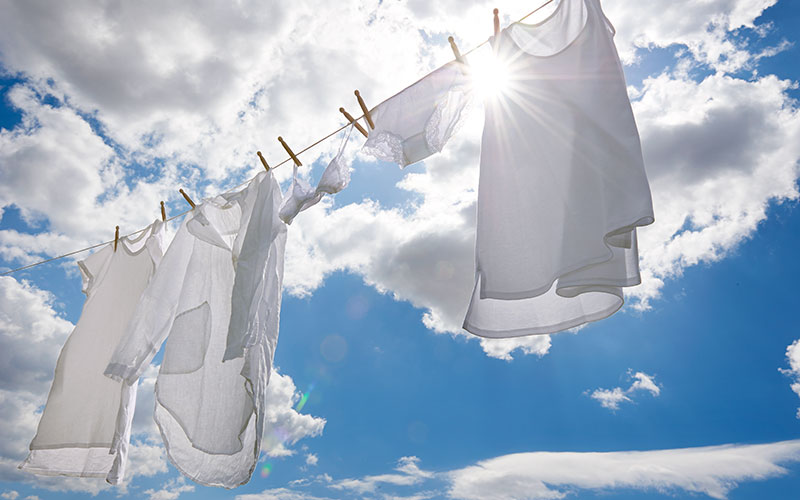
Carlo Petrini began the “slow food” movement in 1986. When this international campaign was created, springing from the desire to protect local food cultures and emphasize the pleasure of food over the immediate gratification (and often resulting regret) of the growing fast-food culture, Carlo’s ideas sounded idealistic, and perhaps a bit unrealistic. But three decades later, the slow food concept has infused the global culture with a newfound respect for quality food, locally sourced ingredients, and care for the earth, with an emphasis on pleasure. It’s also helping transform the fast-food industry.
Now the apparel industry is in the process of going through a similar transformation.
Some clothing companies have been leading the way for a while now. Patagonia, especially, has a ruthlessly wonderful emphasis on environmental stewardship, quality over quantity, and styles that last decades instead of months. However, the same divide that split the food world for so long has affected the apparel industry, too.
Before slow food, there were two main “food groups”: the mainstream-food people and the health-food people. Mainstream food was high on pleasure and low on integrity (I include gourmet food folks in this group). Health food was high on integrity but low on pleasure. I see the apparel industry being split similarly, with the mainstream-fashion people being high on style and low on integrity and the responsible fashion people being low on style and high on integrity.
I know this because I’ve been trying to shop for clothing with integrity for decades. And I happen to love stylish clothes. Trust me, it’s been a long, frustrating, depressing, and slow effort. It’s one of the main reasons I launched Rodale’s two years ago: I wanted to put the pleasure back into apparel shopping for people who actually care about the world.
You may be wondering why fashion integrity matters—because after all, you don’t eat clothing. But the truth is, just as with food with integrity, clothing with integrity effects a huge swath of people and places: where the fiber comes from and how it’s produced; the people who make the clothing and how and where it’s manufactured and shipped; and the process of shopping, wearing, recycling, and upcycling all have tremendous impact on the entire planet.
After all, apparel is truly a global business. Around the world, low-paid laborers (often working in horrific conditions) enable us to enjoy a cheap, trendy outfit while they are worked to the bone making them for pennies apiece. This outfit we then might wear a few times (if at all!) before throwing it out or giving it away to move on to the next style. Not to mention all the toxins—from growing cotton to dying clothes. It’s an ugly story when you pull back the dressing room curtain.
As someone who has shopped at both Bergdorf Goodman and Tractor Supply Company (and enjoyed both), I’d like to share a secret that not many people know: The true pleasure of high-end luxury shopping is about how the clothes feel against your skin—the delicate fuzziness of cashmere, the pleasurable touch of silk, the fine and tender drape of pima cotton or merino wool. But then there’s also how good you feel on the inside. I want both! (Yes, I am a woman who wants it all!). But I also want everyone to have it all. And the truth is, it’s possible. The feel of a sustainably made Alternative Apparel organic-cotton shirt rivals the look and feel of the most expensive shirts I’ve ever purchased—yet it’s machine washable and makes me feel good both inside and out because I know I’m supporting all good things and good people from beginning to end…and for only $48.
You’re right. That’s a higher price than a fast-fashion shirt from H&M, or Walmart, or maybe even J. Crew. But it’s a lot less than the $300 someone might pay for a high-end brand shirt at a true luxury retailer. More importantly, nothing was harmed or damaged in the process of making the Alternative Apparel shirt. Pesticides weren’t sprayed, people weren’t overworked and underpaid, water wasn’t wasted, and toxic dyes weren’t leaked into nature. In fact, money from my purchase went to making the world better in the first place—not after the fact, to pay for our sins.
So, slow down for a bit. Think about what you wear and where you buy. It’s possible, and in fact desirable, to have both pleasure and integrity in the clothing you wear.
Bottom line: Slow fashion feels good. Inside and out.




All your Rodale’s clothing is really cute but super-expensive. Does organic and ethical clothing *really* need to cost that much–a $48 tee-shirt? The people at Maggie’s Organics seem to be practicing the same values without sticking it to the consumer. What gives?
Hi Sarah, Maggie’s is a great company making awesome clothes. And organic comes in all price points. We sell t-shirts on Rodales.com for as low as $12. But if you are looking for a higher style point and finer cotton “hand feel” than Maggies (I am not judging, just saying) then $48 dollars is a great price. We need everyone to go organic at all prices — budget and luxury — in order to clean up and heal the harm we have all done.